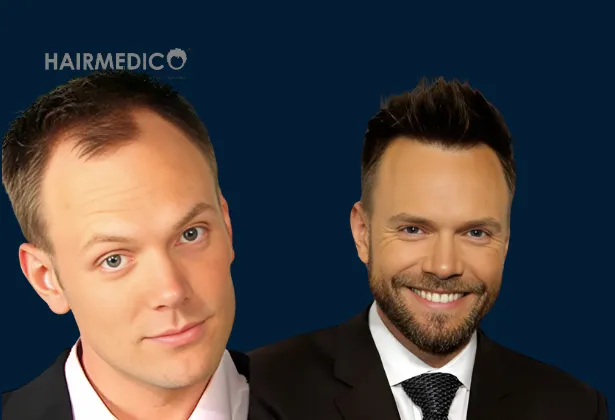
Joel McHale, the charismatic actor and comedian best known for his roles in Community and The Soup, has been the subject of speculation regarding his hairline transformation. Over the years, his hair has appeared fuller and more structured, leading many to wonder whether he had a hair transplant or other hair restoration treatments.
Hair loss is a common issue, especially among men in the entertainment industry, where appearance plays a significant role. While some celebrities prefer to remain silent about cosmetic procedures, others embrace them openly. In Joel McHale’s case, there has never been an official confirmation, but visible changes suggest he may have undergone a hair restoration procedure.
This article will explore:
For those considering a permanent solution to hair loss, modern techniques such as FUE and DHI hair transplants provide natural, long-lasting results.
To see more celebrity hair transformations, check out Hair Transplants: Celebrities’ Transformations.
In the early days of his career, Joel McHale had a slightly receding hairline, which is common for men as they age. However, in recent years, his hair appears thicker, denser, and more defined, particularly around the temples.
Unlike some celebrities who experience progressive thinning, Joel McHale’s hairline has remained remarkably stable and full, leading many to believe that he may have sought professional hair restoration treatments.
While it is possible that his transformation is the result of good hair care, styling techniques, or medications, the level of improvement suggests a surgical or non-surgical intervention.
If Joel McHale did undergo a hair transplant, the most likely method would be FUE (Follicular Unit Extraction). This technique is the gold standard for hair restoration due to its natural results, minimal scarring, and quick recovery time.
To learn more about how FUE transplants work, visit Hairmedico’s guide to hair transplant techniques.
If Joel McHale did not undergo a hair transplant, another possibility is Platelet-Rich Plasma (PRP) therapy.
PRP therapy involves:
PRP therapy is a popular option for those who want to maintain their hair naturally without surgery. Learn more about PRP therapy and its benefits.
Dr. Arslan Musbeh, a renowned hair transplant expert at Hairmedico, shares his professional insight on Joel McHale’s hair transformation:
"Based on available photos, Joel McHale’s hair appears thicker and more structured than before. While some of this could be attributed to styling, the most likely explanation is either an FUE hair transplant or PRP therapy to improve density and maintain a youthful hairline."
For those considering a hair restoration procedure, a consultation with an experienced specialist is crucial. Visit Hairmedico for a professional evaluation.
If you are experiencing hair thinning or a receding hairline, there are several advanced solutions to help restore natural hair density.
To determine which solution is best for your hair type, schedule a consultation at Hairmedico: Book a Consultation.
For more insights into celebrity hair transformations, visit Hair Transplants: Celebrities’ Transformations.
No, Joel McHale has never publicly confirmed undergoing a hair transplant, but visible changes in his hairline suggest some form of hair restoration treatment.
The cost of an FUE hair transplant varies based on the clinic and the number of grafts required. At Hairmedico, prices typically range from $2,500 to $6,000, depending on the patient’s needs.
Hair growth starts within three to six months, with final results appearing after 12 to 18 months.
Yes, hair transplants provide long-lasting results because the transplanted follicles are genetically resistant to hair loss.
For more information on aftercare, visit Hairmedico’s Post-Transplant Care Guide.
If you’re considering a hair transplant, book a consultation with Dr. Arslan Musbeh at Hairmedico today.